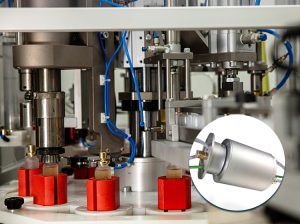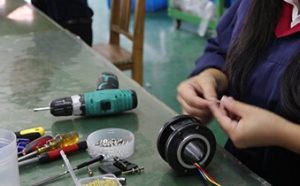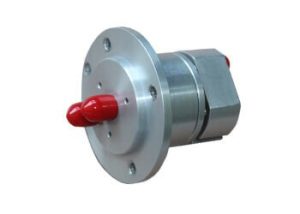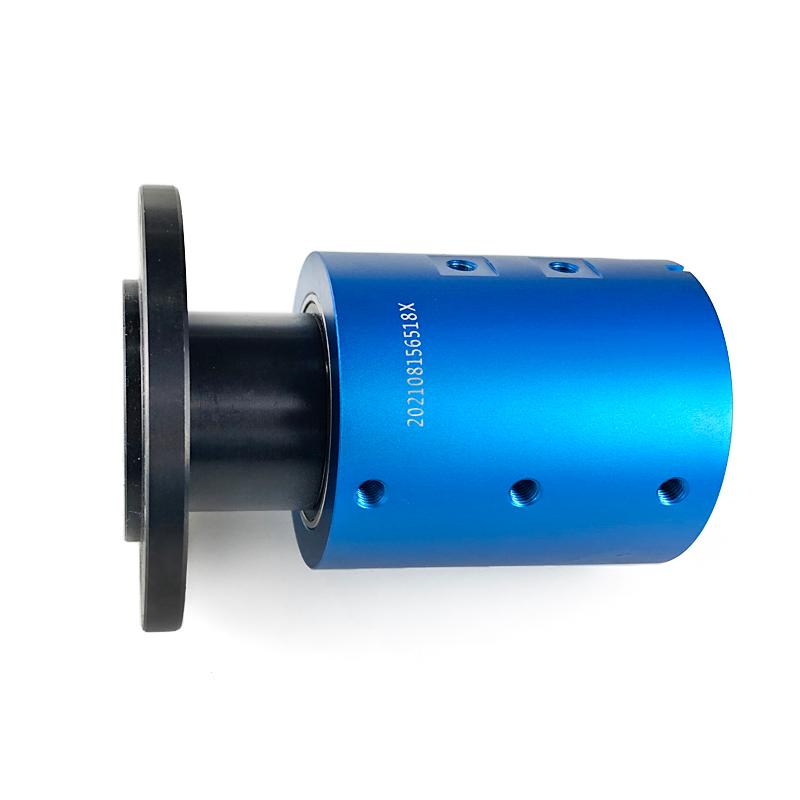Introduction
In the myriad operations and functions of industrial machinery, steam rotary unions, also known as steam joints or rotating unions, hold a crucial position. These specialized devices perform an essential role in transferring various forms of heat, fluids, and steam across both stationary and rotating components in residential and large-scale industrial applications. This article aims to delve into the intricacies of steam rotary unions, providing a comprehensive exploration of what they are, the materials they are crafted from, the unique features they deliver, as well as their technical specifications. Furthermore, we’ll explore their applications in different industries, the various types available in the market, and the benefits they offer. Also, the article will help you understand how to choose a steam rotary union correctly, shed light on potential alternatives, and elucidate what causes these unions to fail. Finally, guidance on maintaining and cleaning steam rotary unions, rounding off with a summary, and addressing frequently asked questions on the topic will be provided.
What Are Steam Rotary Unions?
Steam rotary unions are highly specialized devices that primarily facilitate the transmission of steam, or other thermal fluids, from a stationary source to a rotating component within a mechanical system. This rotation can be part of a larger assembly like machinery or equipment.
The device features a unique design that allows it to perform its primary function – transmitting steam at various pressures and temperatures – without any significant loss of heat, reduction in fluid flow rate, or excessive leakage. These unions often come with a shaft in the center which spins as per need, while the outer body of the device remains stationary.
At the core of a steam rotary union’s operation is the effective coupling that it creates between the fixed and moving parts. This coupling can be seen as a bridge that allows heat/steam/thermal fluids to cross over from a stationary pipeline into a rotating tool or equipment part, thereby ensuring the efficient transfer of heat or fluid energy.
The steam rotary union achieves this fluidic path without letting the rotating parts come to a standstill or triggering wear and tear in the system. It achieves this impressive feat through a careful combination of different seals, bearings, and other components that effectively manage the challenges of rotation, pressure, and temperature.
The paramount goal of a steam rotary union is to maintain the integrity and reliability of the entire system, keeping it operable and productive while ensuring that the provision of steam or thermal fluids to the required components is consistent, efficient, and safe.
Materials Used in Steam Rotary Unions
Steam rotary unions are constructed using various materials to fulfill specific requirements, such as durability, corrosion resistance, and thermal conductivity. The choice of material depends on the nature of the application and the operating conditions. Here is an expanded description of the four materials commonly used in the construction of steam rotary unions:
Stainless Steel
Stainless steel is an alloy of iron, chromium, and often nickel, which forms a strong and highly durable material ideal for heavy-duty applications. Its high chromium content gives it excellent corrosion resistance, making it well-suited for steam rotary unions used in high-pressure steam applications and corrosive environments. Additionally, stainless steel offers good mechanical properties, enabling the unions to withstand extreme pressures and temperatures, further adding to the longevity of these devices.
Brass
Brass is an alloy of copper and zinc that offers relatively good corrosion resistance and thermal conductivity properties. Although not as robust as stainless steel, brass is a common choice for low-pressure steam applications where extreme corrosion resistance is not required. Its inherent thermal conductivity ensures that heat is effectively transferred across the rotating components of the rotary union, while its lower cost compared to stainless steel makes it an attractive choice for certain applications.
Carbon Graphite
Carbon graphite is a unique material possessing self-lubricating properties and resistance to high temperatures and chemical corrosion. These qualities make it an ideal choice for sealing components within steam rotary unions, as they create a reliable barrier against fluid leakage while minimizing friction between rotating and stationary parts. Furthermore, the wear resistance of carbon graphite contributes to the extended service life of the rotary union.
Engineering Ceramics
Engineering ceramics, such as silicon carbide, aluminum oxide, or zirconia, are known for their excellent wear resistance and thermal conductivity properties. These materials are often employed in the bearings and seals of steam rotary unions due to their ability to withstand extreme temperatures and resist wear, leading to longer component life and reduced maintenance. The high structural rigidity and wear resistance of these materials also contribute to the overall reliability and performance of steam rotary unions under demanding operating conditions.
Steam Rotary Unions Features
Steam rotary unions come with an array of features to provide efficient, reliable, and safe operations. Here, we expand on four key features of these devices:
High Thermal Conductivity
Effective thermal conductivity is an important feature of steam rotary unions. It denotes the union’s ability to efficiently transfer heat between the stationary and rotating components. Materials with high thermal conductivity, such as brass and stainless steel, are often used in the construction of these unions to facilitate rapid heat exchange without substantial temperature loss. This ensures optimal performance, improved system efficiency, and reduced energy consumption.
Minimal Leakage
A well-designed steam rotary union minimizes fluid leakage, thereby increasing the efficiency and reliability of the system. Sealing materials, such as carbon graphite and engineering ceramics, along with a precision-engineered design, constitute the primary barrier against fluid leakage. Maintaining tight seals not only prevents loss of media, pressure, and operation efficiency but also safeguards against potential damage to surrounding equipment and components.
Durability
Given the demanding conditions under which rotary unions operate, durability is a critical feature. Steam rotary unions are designed to withstand high pressure, high temperature, and rigorous mechanical wear from continuous operation. The use of robust materials like stainless steel and engineering ceramics plays a critical role in extending the service life of these unions, reducing the need for frequent replacements and allowing for longer periods of uninterrupted operation.
Low Friction
Minimizing friction between the rotating and stationary components is another key feature of steam rotary unions. This helps to reduce wear and tear, leading to longer component life, more efficient operation, and reduced maintenance. Self-lubricating materials, such as carbon graphite, can be used in seals and bearings to achieve this low-friction environment. Furthermore, precision-machined surfaces also contribute to reducing friction, ensuring that the rotary motion is smooth and consistent.
Steam Rotary Unions Technical Specifications
Each steam rotary union comes with certain technical specifications that determine its performance, durability, and suitability for specific applications. Here are the expanded descriptions for five key technical specifications:
Maximum Steam Pressure
This refers to the greatest amount of pressure that a rotary union can handle. The maximum steam pressure specification is especially crucial as steam applications usually involve high-pressure conditions. If a rotary union can’t withstand the system’s maximum pressure, it can lead to equipment failure. Always ensure that the union’s maximum pressure rating aligns with or exceeds the pressure in your application.
Maximum Temperature
As steam applications often involve high temperatures, rotary unions must withstand these without losing functionality or causing safety issues. The maximum temperature specification indicates the highest temperature the union can tolerate. Material selection plays a significant role here, influencing the union’s ability to endure high temperatures.
Rotational Speed
The rotational speed is the maximum number of revolutions per minute (RPM) that the rotary union can handle. High rotational speeds require unions designed with special bearings and seals to reduce friction and cope with the generated heat. It is crucial to match the rotary union’s rated speed with your application to prevent premature wear and tear or potential equipment failure.
Number of Flow Passages
This refers to the number of separate flow paths within a rotary union. Some applications necessitate the simultaneous transfer of multiple mediums (like steam, air, or water) through the union. With multiple flow passages, a single rotary union can handle various fluids without interaction among them.
Connection Types
The method by which a rotary union connects to your equipment is imperative for assembly and performance. Common connection types include threaded, flanged, and clamp connections, each with their benefits. Opt for the connection type best suited for your specific system and requirements, taking into account factors like ease of installation, maintenance, and system pressure.
What Are Steam Rotary Unions Used For?
Steam rotary unions find application in a variety of industry sectors necessitating heat transfer between stationary and rotary components. Below we explore five key areas of their usage:
Heating Rolls
Rotary unions play an essential role in the efficient operation of heating rolls in the paper, printing, textile, and laminate industries. In these applications, steam (or another heat medium) is passed through the rotary union into the rotating rollers to heat them, aiding various thermal processing tasks like drying, bonding, and laminating.
Power Generation
In power generation plants, particularly those related to renewable energy like wind and hydropower, rotary unions are used to transmit different types of fluids. Here, they ensure a reliable connection between stationary feed lines and rotating machinery parts, allowing for the smooth generation and distribution of power.
Plastics Manufacturing
In the plastic manufacturing industry, rotary unions are used in cooling or heating the molds used within injection molding or blow molding machines. They provide temperature-controlled fluid (like steam for heating and water for cooling) to these rotating molds, ensuring the plastic retains the desired shape and specifications.
Food and Beverage Processing

In this industry, rotary unions are used for heating or cooling the product or the equipment, as in baking ovens, rotary cookers, pasteurizers, and freezer tunnels. The thermal fluid transported could be steam, hot oil, or even chilled water, depending on the precise requirement of the process.
Metallurgical and Chemical Industries

In metal manufacturing processes, rotary unions transfer heat to furnace rolls used to heat-treat the metals. In the chemical industry, they facilitate cooling or heating the processing reactors and mixing vessels. These application areas appreciate the robustness and long life cycle of steam rotary unions.
Types of Steam Rotary Unions
Steam rotary unions come in different types to cater to a wide range of industrial applications, each with unique properties and advantages. Here’s an in-depth look at the three types of steam rotary unions:
Single-Flow Steam Rotary Unions
Single-flow steam rotary unions are designed to facilitate the transfer of a single medium (like steam, water, or thermal oil) between the stationary and rotating components in a system. They are most commonly used in applications where only heating or cooling is required. Made up of simple and straightforward design, single-flow unions offer an economical solution for many heating or cooling applications. They usually consist of a single inlet and outlet, along with a rotating and stationary side.
Dual-Flow Steam Rotary Unions
Dual-flow rotary unions are constructed to handle the simultaneous transfer of two separate mediums. For instance, they can manage the concurrent transfer of steam for heating and water for cooling, making them highly versatile for applications that involve competing thermal processes. Dual-flow unions usually consist of two distinct pathways, each meant to house a specific medium.
Multiple-Flow Steam Rotary Unions
These rotary unions are designed for even more complex systems that demand the transfer of more than two mediums. They feature multiple flow passages to accommodate the concurrent transfer of different fluids. Multiple-flow steam rotary unions are used in advanced machinery and complex industrial systems where several processes occur simultaneously, and each depends on a different thermal fluid. Due to their complexity, these types of unions are relatively more expensive than their counterparts but deliver unparalleled versatility and efficiency.
Different Types of Benefits of Steam Rotary Unions
Steam rotary unions provide several benefits that make them invaluable components in numerous industrial applications. Here are the expanded descriptions of the four key benefits:
Efficient Heat Transfer
By their operational design, steam rotary unions facilitate the efficient transfer of heat between stationary and rotating components. This not only boosts the efficiency of the thermal processes involved but also conserves energy, resulting in significant cost savings. Whether heating or cooling is required, a fine-tuned rotary union ensures optimal heat transfer, enhancing productivity and the overall system efficacy.
Operational Integrity
Steam rotary unions are durable and designed to withstand rigorous industrial conditions, such as high pressures and temperatures. The right material selection for components like seals and bearings ensures a long lifespan and reliable performance. This results in lower maintenance requirements and longer times between necessary services, reducing the overall operational costs.
Versatility
The design of steam rotary unions allows them to be utilized in a multitude of industrial applications. Single, dual, and multiple-flow unions cater to a variety of needs, from simple to complex systems, ensuring seamless operations irrespective of the system’s intricacies. Whether it’s power plants, food processing, paper mills, or chemical industries, steam rotary unions prove to be versatile across sectors.
Prevents Leakage
A major benefit of steam rotary unions is their inherent design to prevent fluid leakage. This not only retains system efficiency but also eliminates potential hazards associated with leakage, such as injury to personnel or damage to equipment. High-quality seals and precise engineering all contribute to making steam rotary unions leakproof. Lower risk of leaks means safer workspaces, implies greater efficiency and equates to reduced cost implications due to minimal wastage of media.
The Benefits of a Steam Rotary Union
Steam rotary unions offer numerous advantages, making them an essential component in a wide array of industrial applications. We explore the benefits associated with steam rotary unions through the expanded descriptions of the four main aspects:
Enhanced System Efficiency: Steam rotary unions contribute to optimized heat transfer, ensuring that the exchange between stationary and rotating components is as efficient as possible. This results in a more streamlined system with enhanced overall efficiency and performance. By reducing energy waste and closely maintaining desired temperature levels, steam rotary unions significantly improve the performance of the connected machinery and processes.
Long-lasting Operations: Designed to withstand harsh operating conditions such as high pressures, temperatures, and continuous rotation, steam rotary unions provide long-lasting and reliable operations. Their use of durable materials and precision engineering ensures minimal wear and tear, leading to decreased maintenance needs. This ultimately extends the life of your equipment, resulting in cost savings and fewer disruptions related to maintenance or replacements.
Leakage Prevention: A well-designed steam rotary union minimizes fluid leakage, increasing both the efficiency and safety of your system. The use of suitable sealing materials, precise engineering, and tight tolerances help maintain the integrity of the seals, preventing both loss of media and potential damage to surrounding equipment and personnel. This ensures smooth operations and fewer accidents, contributing to a safe and efficient work environment.
Adaptability: One of the key benefits of steam rotary unions is their adaptability in a variety of applications and industries. Available in single, dual, and multiple-flow designs, they cater to different system requirements, from simple systems requiring basic heat transfer to more complex systems that demand simultaneous transfer of multiple fluid types. This versatility makes steam rotary unions indispensable components across diverse sectors such as power generation, paper manufacturing, textile processing, chemical processing, and more.
How to Choose Steam Rotary Unions?
Choosing the right steam rotary union for your application is paramount for attaining optimal system performance and reliability. Here, we describe in detail four key factors to consider while selecting a steam rotary union:
Operational Conditions: The operational conditions of your application fundamentally determine the rotary union’s performance. Consider the system’s maximum pressure and temperature, as these should align with or be lower than the union’s rated maximum pressure and temperature. Additionally, reflect on the rotational speed needed by your application and ensure your chosen rotary union can handle that without undue stress or wear.
Mechanical Configuration: Consider the mechanical setup of your machinery or system and select a union that can be integrated easily. Assess the connection type (threaded, flanged, clamp, etc.) that suits your system best. Similarly, ensure the size, dimensions, and orientation of the union align well with the assigned operation to facilitate smooth installation and efficient performance.
Type of Media: The type of media being transferred (steam, water, thermal oil, etc.) is another vital aspect. While most rotary unions are designed to handle specific mediums, others are versatile enough to deal with a variety. The media type can impact the seal material choice, thus influencing the effectiveness and life of the rotary union.
Number of Flow Passages: Consider the number of flow passages you need your union to have based on your application requirements. If you need to transfer a single medium, a single-flow union will suffice. Dual-flow or multiple-flow unions become necessary if you need to deal with two or more types of media simultaneously.
Remember, investing time in defining your application needs can ensure you choose the right steam rotary union that not only fits your requirements but also leads to greater efficiency and longer equipment lifespan.
What Are the Alternatives to Steam Rotary Unions?
While steam rotary unions are highly effective in applications that require heat transfer between rotating and stationary components, there are alternative components that can be employed depending on the situation.
Swivel Joints

Swivel joints function similarly to rotary unions, allowing fluid to flow from a stationary source to a rotating component. They are typically found in applications that require lower pressures and revolve less frequently, such as filling machinery, hose reels, or other applications where rotation is infrequent. Swivel joints are usually more straightforward in design than rotary unions, having only one internal chamber and two seals, and are easier to maintain.
Flexible Hoses
Flexible hoses can be applied as an alternative in low-rotation-speed systems where the pressure is also low. They allow the fluid to pass from a stationary part to a rotating one through the flexibility of their structure. However, their use might be practically limited due to higher wear and tear and the risk of leakage, especially in high-speed or high-pressure systems.
These alternatives have their own benefits and drawbacks. The choice between a steam rotary union, a swivel joint, or a flexible hose largely depends on the specifics of the application, such as speed, pressure, temperature, and the degree and frequency of rotation. An expert in fluid dynamics and connection solutions can guide you toward the most suitable choice for your system.
What Are the Causes of Steam Rotary Unions’ Failure?
Even though steam rotary unions are robust and reliable, they can fail due to various reasons. Here we are expanding on the three common causes of steam rotary union failures:
Wear and Tear
Just like any mechanical component, steam rotary unions are subjected to usual wear and tear during operation, which could eventually lead to failure. Components like seals, O-rings, and bearings can deteriorate over time, especially under continuous high-speed rotation, high temperature, and pressure. Regular timely maintenance and appropriate material selection can play pivotal roles in combating wear and tear.
Misalignment
Accurate alignment between the rotating and stationary components is critical for the optimal functioning of a rotary union. Misalignment can result in uneven wear, causing premature aging of various rotary union components. It can lead to increased friction, vibrations, and ultimately, system failure. Careful installation and regular inspections are key to identifying and correcting alignment errors.
Inadequate or Improper Maintenance
Rotary unions, despite their robust construction, require routine maintenance to counteract regular wear and to check operational soundness. Failure to do so can result in decreased performance and even premature failure. Inadequate lubrication, accumulation of debris, and not addressing minor repairs timely also fall under improper maintenance and can significantly shorten the rotary union’s lifespan.
Understanding these potential causes of failures can offer insights into maintaining the rotary union’s operation and preventing unnecessary downtime. Regular inspections and proper maintenance schedules are critical to maximizing the life of steam rotary unions repeatedly.
Maintenance and Cleaning of Steam Rotary Unions
Proper maintenance and regular cleaning of steam rotary unions are crucial for ensuring long operational life and optimal process efficiency. Here, we shed light on three key aspects of maintenance and cleaning:
Regular Inspection
Regular and routine inspection is the first step in maintaining the performance of steam rotary unions. It involves checking for leaks, examining wear and tear on seals, bearings, or other components, and ensuring proper alignment. Regular inspection also allows for early detection of potential issues, such as deteriorating seals and unusual vibrations, which can be addressed before leading to a catastrophic failure.
Cleaning
Over time, steam rotary unions can accumulate debris and residues which can impair their performance. It’s important to clean the rotary union periodically to eliminate such build-ups. Cleaning should be done using suitable cleaning agents and tools, and care should be taken to avoid damaging any part of the union during the process. In some cases, disassembling the union may be needed to properly clean internal parts.
Seal and Bearing Replacements
Seals and bearings are vital components of steam rotary unions and are also the most susceptible to wear and tear. Regular inspection can reveal the condition of these parts and indicate when they need to be replaced. Always use replacements that are suitable for the specific application conditions. Consider replacing these components as a preventative measure even if they haven’t failed, as they may extensively wear out over time due to prolonged exposure to high pressure, speed, and temperature.
Remember, a well-maintained steam rotary union improves the overall system reliability and efficiency, while also enhancing the safety of the workplace, making these maintenance practices worthwhile investments.
Conclusion
In conclusion, steam rotary unions play a vital role in a myriad of industrial applications, providing efficient heat transfer between stationary and rotating parts, reliable operation, effective leakage prevention, and adaptability. Their choices are influenced by several critical factors, including operational conditions, mechanical configurations, the type of media, and the number of flow passages required.
Although alternatives like swivel joints or flexible hoses can be used, whether they are a suitable replacement depends on speed, pressure, temperature, and the degree and frequency of rotation.
Like any mechanical component, steam rotary unions can fail due to reasons such as wear and tear, misalignment, and inadequate or improper maintenance. However preventative measures, such as regular inspection, periodic cleaning, and timely seal and bearing replacements, can significantly reduce the chances of failure and ensure extended operational life and optimal process efficiency.
In essence, understanding the significance, application criteria, potential failure points, and maintenance needs of steam rotary unions facilitates wise decision-making, resulting in improved efficiency, safety, and longevity of your industrial systems.
Frequently Asked Questions About Steam Rotary Unions
Q: Can I use a steam rotary union for other fluids besides steam?
A: Yes, steam rotary unions can be used for other thermal fluids as long as the materials and design are compatible with the specific fluid.
Q: How do I determine the size and connection type for my steam rotary union?
A: Consider the size and connection type of your system components (pipes, hoses, etc.) and your application requirements to determine the correct size and connection type.
Q: What is the typical lifespan of a steam rotary union?
A: The lifespan depends on factors like operating conditions, maintenance, and the quality of the rotary union. Proper maintenance and the use of high-quality materials can help prolong the lifespan.
Q: Do I need to lubricate the steam rotary union?
A: Some steam rotary unions require regular lubrication, while others have self-lubricating materials. Consult the manufacturer’s guidelines for specific maintenance requirements.


